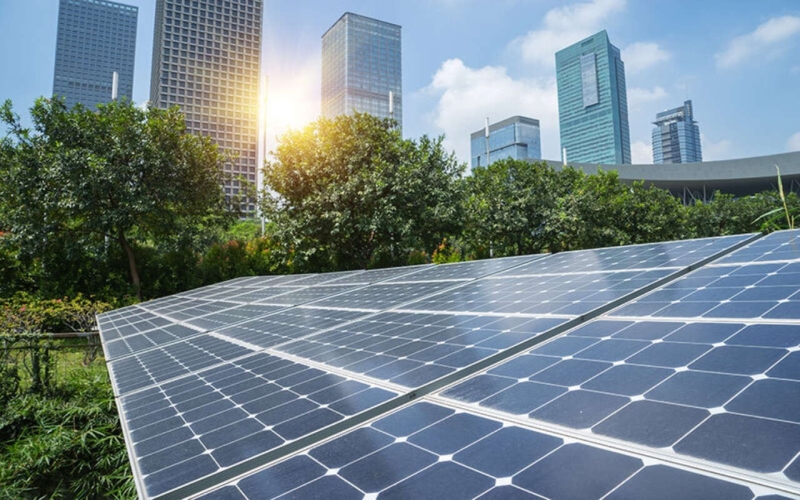In today’s urban environments, where space is at a premium and environmental concerns are on the rise, innovative solutions are crucial for sustainable development. Among these, commercial solar panels are emerging as key players in transforming urban landscapes into greener, more energy-efficient spaces. This article delves into the impact of solar panels in commercial settings, exploring how they not only contribute to environmental sustainability but also offer economic benefits and reshape our urban environments.
The Urban Shift Towards Renewable Energy
As cities continue to grow, the demand for energy increases, putting pressure on traditional power sources and exacerbating environmental problems. In this context, solar energy presents a clean, renewable alternative that can significantly reduce carbon emissions and dependence on fossil fuels. Commercial solar panels, in particular, are becoming a popular choice for businesses and urban developers looking to invest in sustainable energy solutions.
Economic and Environmental Incentives
The adoption of commercial solar panels is driven by both economic and environmental incentives. Economically, solar panels can significantly reduce electricity bills for businesses, offering a return on investment through lower operational costs over time. Government incentives, such as tax credits and rebates, further enhance the financial attractiveness of solar investments.
Environmentally, solar panels represent a crucial step towards reducing the carbon footprint of urban areas. By generating clean energy, they help mitigate the effects of climate change, contributing to cleaner air and a healthier urban environment. This shift towards solar energy not only benefits the planet but also aligns with the growing consumer demand for sustainable business practices.
Transforming Urban Landscapes
The integration of commercial solar panel systems into urban landscapes goes beyond the rooftops of buildings. Innovative applications, such as solar carports, solar-powered street lights, and integrated photovoltaic (PV) systems in building facades, are becoming more common. These applications not only generate clean energy but also enhance the aesthetic appeal of urban environments, signalling a commitment to sustainability.
Moreover, the adoption of solar energy can foster a sense of community and collaboration among urban stakeholders. Community solar projects, for example, allow businesses and residents to invest in solar energy collectively, benefiting from clean power even if they cannot install solar panels on their own premises. This model promotes inclusivity and shared responsibility in the transition to renewable energy.
Challenges and Opportunities Ahead
Despite the benefits, the widespread adoption of commercial solar panels in urban areas faces challenges. Initial installation costs, regulatory hurdles, and the need for technical expertise can be barriers to entry. However, these challenges also present opportunities for innovation, collaboration, and policy development to support the growth of solar energy.
As technology advances, solar panels are becoming more efficient, cost-effective, and adaptable to various urban settings. The development of energy storage solutions, such as batteries, further enhances the viability of solar energy, ensuring a reliable power supply even when the sun isn’t shining.
A Sustainable Future Powered by Solar
The rise of commercial solar panels in urban landscapes is a testament to the growing recognition of the importance of renewable energy in achieving sustainable development. By embracing solar energy, cities can reduce their environmental impact, lower energy costs, and foster healthier, more vibrant communities. As we look to the future, the integration of solar panels into urban environments will undoubtedly play a pivotal role in shaping sustainable, resilient cities. The journey towards a solar-powered future is not without its challenges, but the potential benefits for our planet, economies, and communities make it a path worth pursuing.

